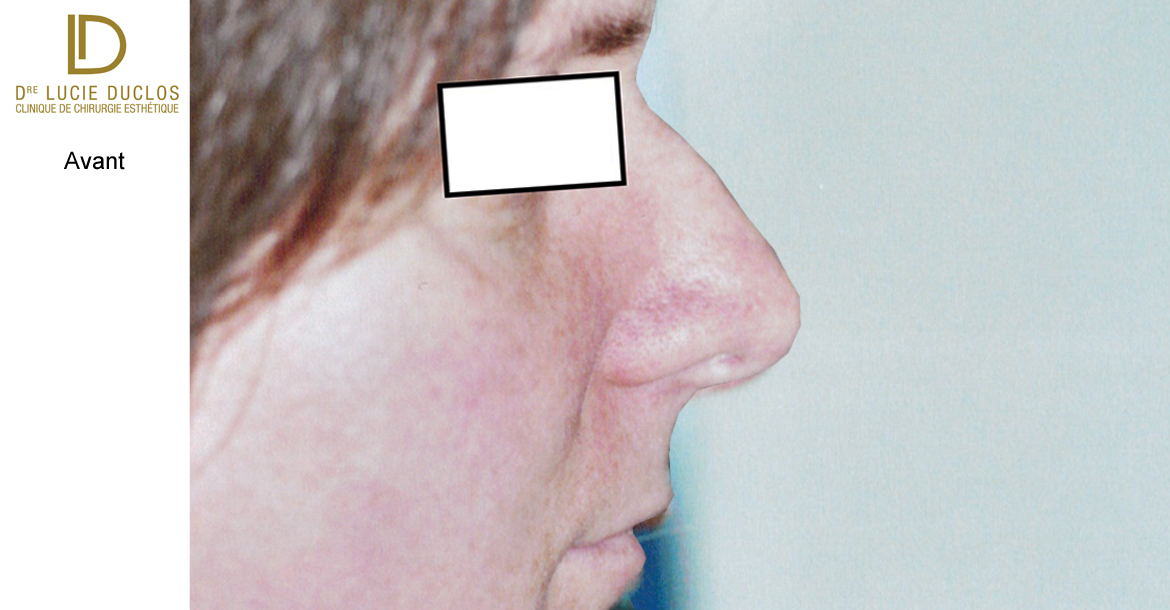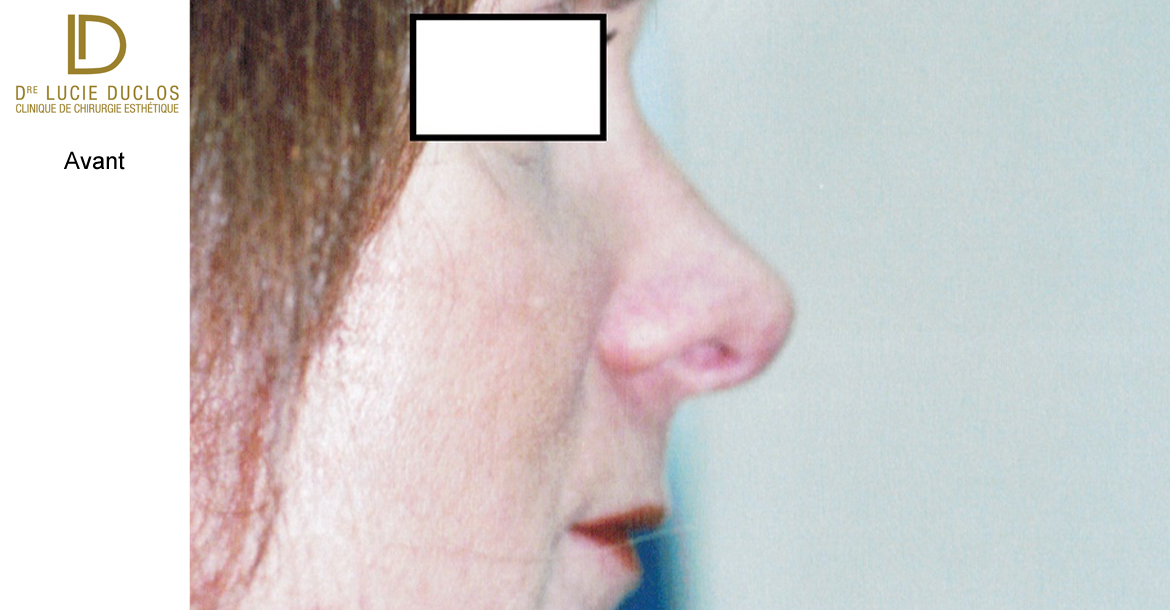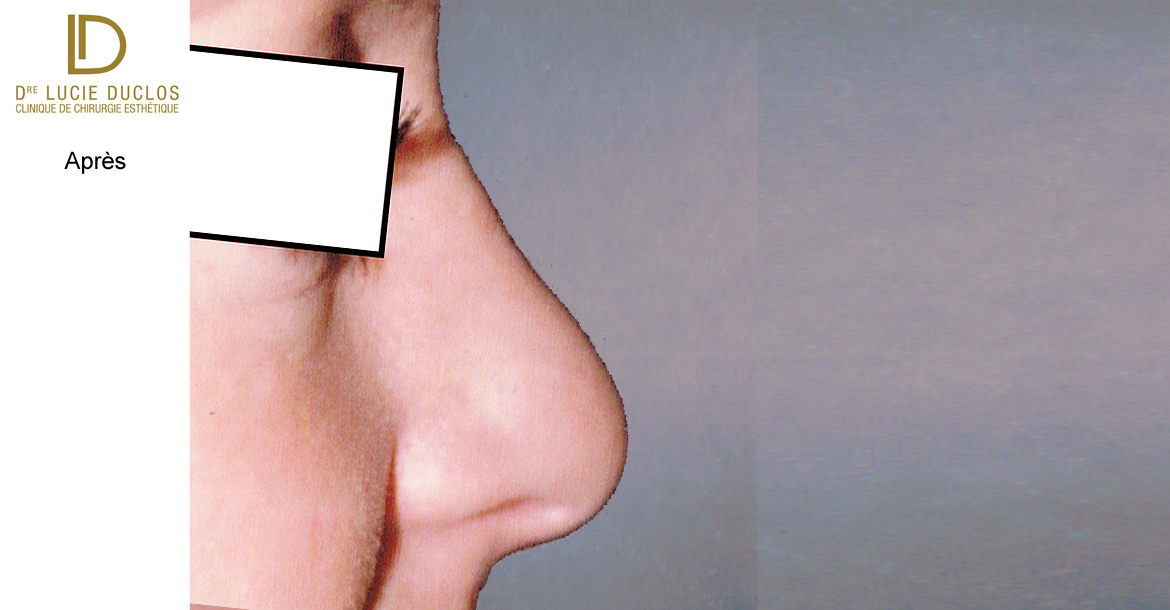What are the advantages?
Rhinoplasty or cosmetic nose surgery is one of the most commonly performed procedures in plastic surgery. Rhinoplasty makes it possible to reduce or increase the volume of the nose, refine it, reduce the size of the nostrils or change the angle between the nose and the upper lip. It allows you to correct a birth defect or one caused by an accident, or to help breathing. It also allows you to reshape an unsightly nose and harmonize it with the face. The important thing is that the nose matches your face and to your personality.
Is it for me?
Rhinoplasty can improve your appearance and your self-confidence, but it will not necessarily change other people’s perceptions of you or the relationships you have with them. Before opting for this intervention, clarify your expectations and discuss them with Dre Duclos. She will be happy to answer clearly and precisely all your questions and to inform you about the most appropriate treatments for your situation. telling you their advantages and disadvantages.
-


Avant 6 mois post opération rhinoplastie Après
What techniques are used?
The nose can be decreased or increased by removing or adding bone and/or cartilage. The technique involves lifting the skin from deep structures, sculpting the cartilage and bones, then replacing the skin. To restore or maintain the harmony of your face, Dr. Duclos could advise you to install facial implants on the cheekbones or chin (see section on chin and cheek implants).
What should I expect?
During the consultation, Dr. Duclos will ask you about your expectations and your state of health (don’t forget to tell her if you have had other nasal surgeries, nasal trauma or if you have difficulty breathing). She will examine the structures of your nose and the morphology of your face. She will give you her recommendations and discuss possible options with you, specifying the location of the incisions as well as the factors that can influence the procedure and the result, such as bones, cartilage, thickness of the skin, age and facial morphology. She will also explain the risks inherent to the procedure, provide you with information on its progress, under local anesthesia, local with sedation or general, and give you pre- and post-operative instructions.
The duration of the intervention depends on its scale. You will then be under observation until your condition allows you to leave the clinic. A prescription for pain medication, instructions and the date of the next appointment will be given to you before your departure. Plan to ask someone to drive you home.
-


Avant 6 mois post opération rhinoplastie Après
After the procedure, the pain is usually tolerable and well relieved with the prescribed medication. You can apply ice to your nose and cheeks for ten minutes every hour, especially during the first two days. Despite the application of ice, swelling and possibly bruising may appear in the nose, eyelids and cheeks. Usually, swelling and bruising are at their worst two or three days after the procedure and subside after 14 days. After two days you will feel good. Slight swelling will persist for several months, especially at the tip of the nose. The final result may not be apparent until a year or more after the procedure.
During the first five days following the procedure, it is recommended to sleep in a semi-sitting position (head of the bed at 60 degrees) or in a “lazy boy” type chair. You will need to avoid bending over, for example, to tie your shoes. You will also need to avoid doing any intense physical activity for two to three weeks and exposing your nose to the sun for about eight weeks.
What are the risks?
Complications are rare and usually minor. However, it is possible that there will be infection, bleeding or poor healing. Small vessels may also appear on the skin. Most of the time, this consequence is minimal, but sometimes this situation is permanent.
In about one in ten cases, a second operation may be necessary to correct, for example, a minor deformity. The response of tissues during the healing process is unpredictable and depends on each individual.

